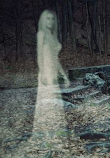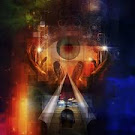Sharon Hewitt Rawlette writes in her essay, Beyond Death: The Best Evidence for the Survival of Human Consciousness — It’s true that apparitions are frequently quite brief, often amounting to little more than a prolonged look before the apparition disappears. In fact, in half of the accounts collected by Haraldsson, the experience lasted no more than a few seconds. However, there are also many cases of much longer apparitions, some of which hold conversations and interact in other complex ways that would seem to require that they be more than a mere freeze-frame of some aspect of the person’s pre-death consciousness.
In one case, a woman named Shirley was struggling to figure out how to get the pension money she was owed after her husband died suddenly of a heart attack. Her husband appeared to her, and she heard him speak, although she didn’t see his mouth moving. Over several minutes, he took her step by step through the pension paperwork, and her check was subsequently processed without a problem.
Johann Kuld’s deceased wife came to him in their bedroom, opening the door as she entered. She told him not to be scared, and he held her hand, which he said had a normal, warm temperature. He asked her where she’d been. “Soon after I died in the hospital they let me stay there to look after a woman who was very ill,” she said. “Since then I have been to many places. Now this time is over, I am leaving. I have come to say goodbye.” They lay down in the bed together, and she stroked his cheek and whispered to him. He eventually fell asleep, and when he woke up, she was gone.
Dr. Melvin Morse reports in his book Parting Visions a case of an interactive apparition that occurred before it was known that the person appearing was dead. A man was out fishing when he noticed his brother-in-law walking down the path toward him. They conversed for several minutes, and then the brother-in-law said he had to go and walked into the woods. Some minutes later, it occurred to the man that his brother-in-law couldn’t have actually been there. When he got home, he discovered that, while he’d been out fishing, his brother-in-law had died in a car accident. And that wasn’t the only time this deceased man visited his family. “He was a carpenter by trade,” says Morse, “and visits his wife’s son frequently with helpful suggestions about woodworking projects.”
The longest interaction with an apparition I’ve found in the literature was investigated in the 1980s by Loyd Auerbach, the same parapsychologist who smelled the anomalous cigar smoke after his friend’s death. In this case, a family purchased a home after the death of a woman, Lois, who had lived there her entire life since birth. Soon after the new owners moved in, four different members of the family began seeing the apparition of an elderly woman in the house. But it quickly became clear that the 11-year-old son, Chris, was having the most frequent and extended encounters. He told his parents that Lois had been appearing to him every day, telling him the history of the furniture in the house (some of which they had purchased along with their home) as well as helping him with his homework. (When he got older, she even gave him advice about girls.)
When Auerbach arrived at the house to investigate, the apparitions had been going on for well over a year, and Lois seemed to be present throughout Auerbach’s visit, though visible only to Chris. The family, along with Auerbach and “Lois,” all sat down in the living room, and everyone proceeded to ask Lois questions about herself, with Chris informing them of her answers. Auerbach recorded all of the information and subsequently verified with a surviving relative the accuracy of the details pertaining to her former life. Auerbach says this experience was a turning point for him. He concluded that it made much more sense to believe that the deceased Lois was actually there communicating with Chris than that Chris was some kind of super-psychic who only got information about this one dead woman, while also occasionally managing to make her visible to his family members.
In another, older interactive case, an elderly woman named Anne Simson in Perth, Scotland, was visited over and over by the apparition of a woman whom she recognized as someone who used to do business at the barracks near her house. The apparition said she was indebted to someone for three and tenpence and to find a Catholic priest, because he would pay the debt for her. Simson finally tracked down a priest named Charles McKay and asked him to take care of the matter. After making some inquiries, McKay found a grocer who told him that the deceased woman in question did indeed owe him a debt. When McKay asked him the amount, the man replied that it was three and tenpence, which the priest immediately gave him. A few days later, Simson came to McKay’s house to tell him that she had seen the apparition again, but that this time the woman said she was at peace. This incident apparently impressed Simson so much that she decided to convert to Catholicism.
It’s actually not unusual for an apparition to express a goal and take steps toward achieving it. In fact, a 1944 study by E. P. Gibson found that the deceased generally have more apparent motivation to manifest in apparitional form than the experiencers of the apparitions have motivation to perceive them. We’ll see another excellent example of goal-directed apparitional behavior at the end of the section on mental mediumship.
Sharon Hewitt Rawlette has a PhD in philosophy from New York University and writes about consciousness, parapsychology, and spirituality for both academic and popular audiences. She lives in rural Virginia. She received an award from the Bigelow Institute for Consciousness Studies for her essay “Beyond Death: The Best Evidence for the Survival of Human Consciousness,” available at https://bigelowinstitute.org/contest_winners3.php. Footnotes in the essay are not included in these excerpts.










